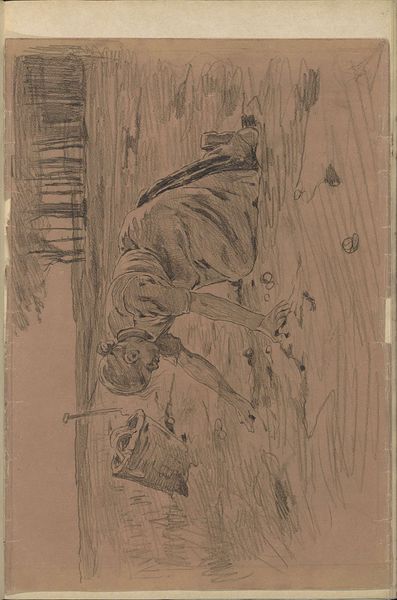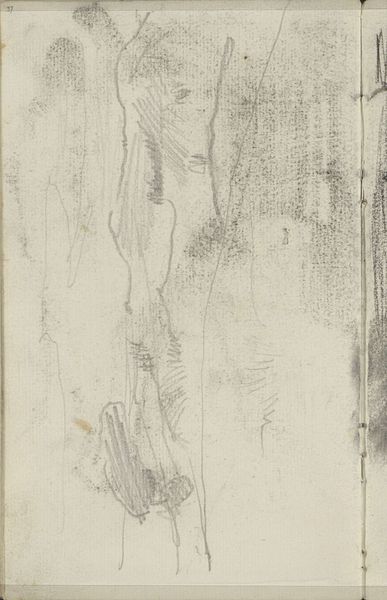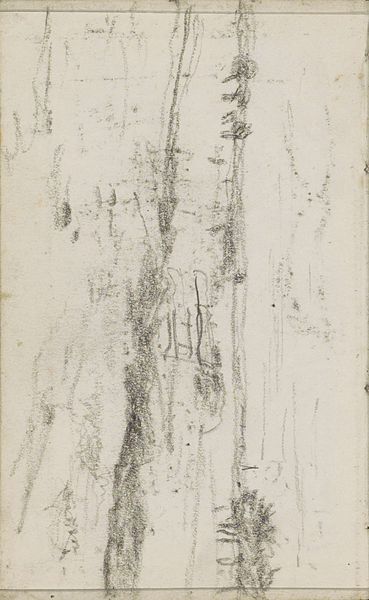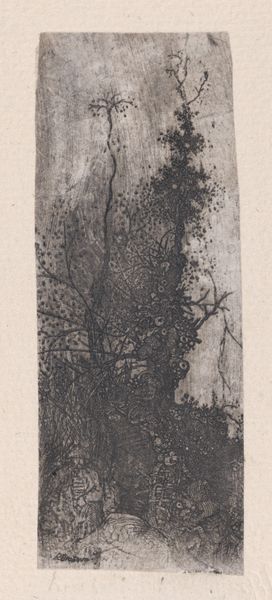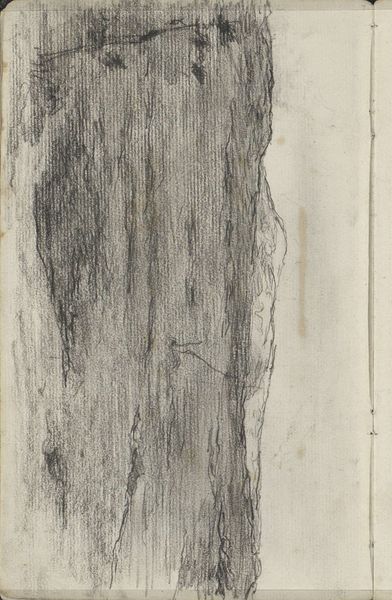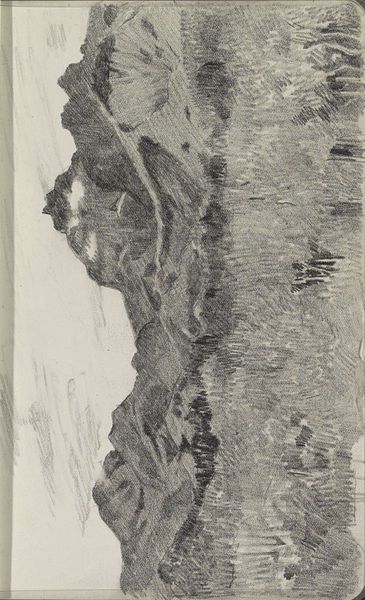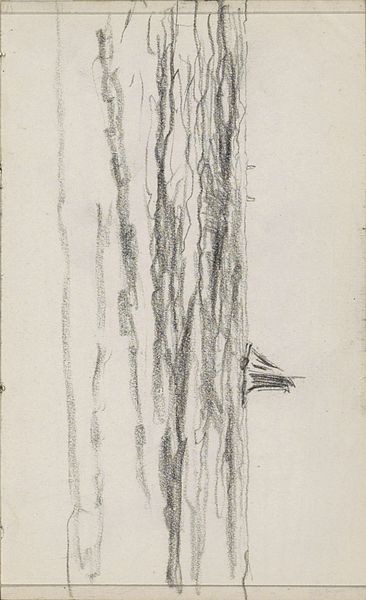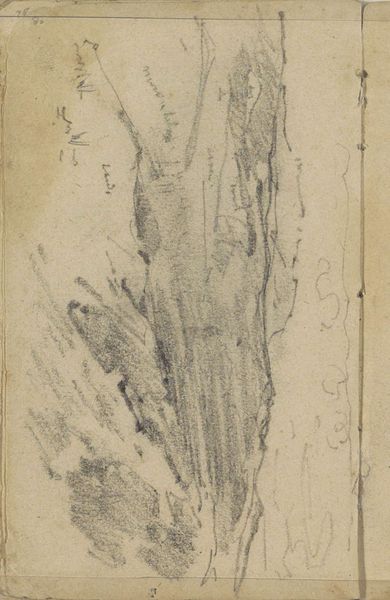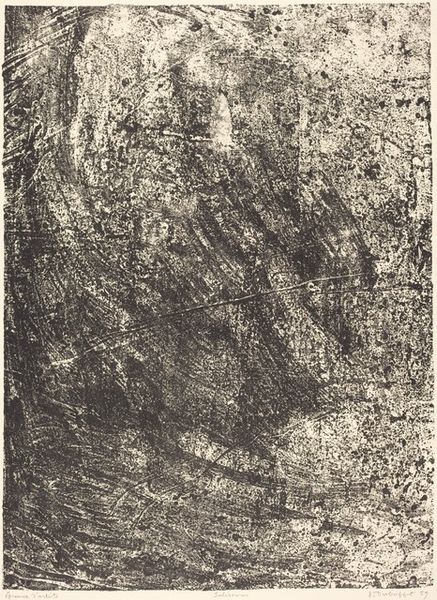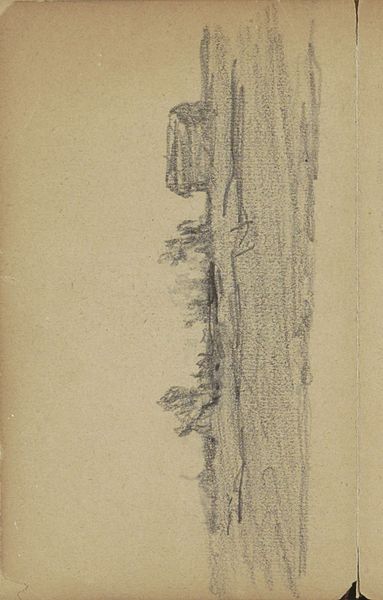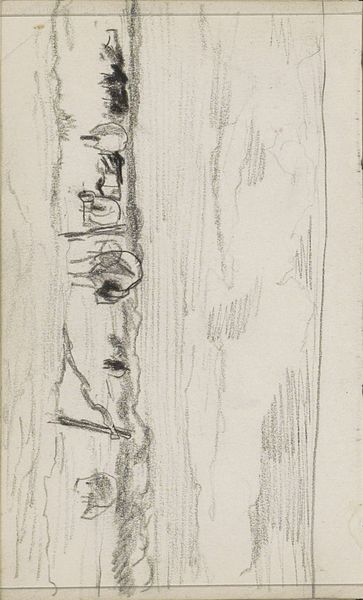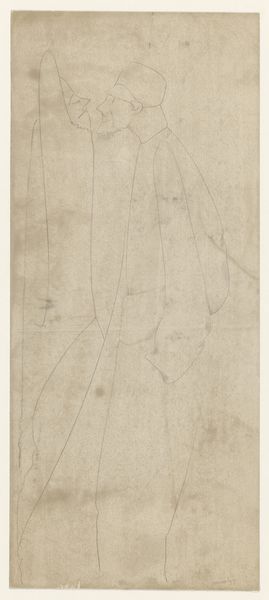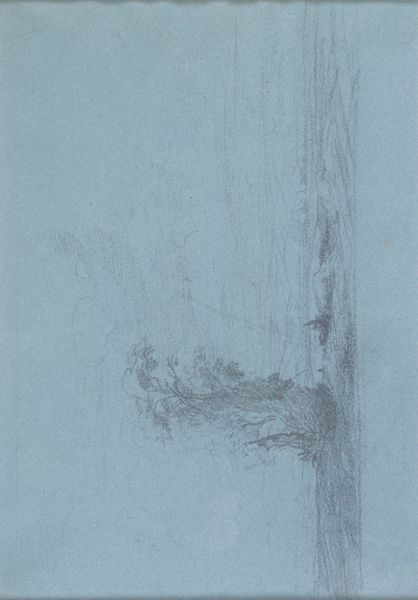
drawing, pencil, graphite, charcoal
#
drawing
#
impressionism
#
pencil sketch
#
landscape
#
charcoal drawing
#
pencil
#
graphite
#
charcoal
#
watercolor
#
realism
Copyright: Rijks Museum: Open Domain
Editor: Here we have "Landbouwgrond" or "Farmland," a drawing created between 1848 and 1888 by Anton Mauve. It appears to be charcoal and graphite on paper. My initial impression is its somberness – a nearly blank scene bisected by a harsh, dark line. What do you see in this piece? Curator: Formally, the stark division of the composition immediately captures my attention. The rigorous vertical line segmenting the page forces a reading of binary oppositions. Note how the artist manipulates tone; a subtle gradation on the right contrasts sharply with the densely marked zone on the left. Consider, too, the textural variety achieved through differing applications of the charcoal and graphite. Editor: So you're focusing on the visual language of the piece? I was wondering if that stark division you mentioned was symbolic of something. Curator: Symbolism is one interpretation. But focusing purely on form, how do those contrasting textures affect the overall aesthetic? The smoothness of the right side highlights the rough, almost chaotic mark-making on the left. Does this asymmetry evoke tension or harmony? Editor: I suppose it evokes tension. It's visually unsettling. I can’t decide if it’s intentional or not. Curator: Perhaps. Is the work “finished”? Consider what meaning lies in those kinds of binaries: Intention vs. accident; rough vs. smooth. Might that dividing line function less as a depiction of a landscape and more as an embodiment of division itself? Editor: I never considered approaching it like that – to analyze just the visual impact, not necessarily the subject. It changes how I look at the entire piece. Curator: Indeed. Close formal analysis offers an objective grounding from which other interpretations can spring. Editor: That’s very insightful, it offers a different perspective for sure. I am more comfortable articulating my thoughts about visual analysis moving forward.
Comments
No comments
Be the first to comment and join the conversation on the ultimate creative platform.

